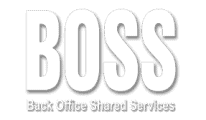You have a strong determination to drive significant growth for your business this year. While every business aims for growth, this is the year when you truly want to make things happen.
However, you find yourself at a loss on how to proceed, plan, and collaborate with your team to achieve your overarching goal of growth.
You are aware that this growth and the aspiration for it must come from within you. It’s just that you haven’t quite grasped how to break down this growth into practical and feasible steps that are both measurable and achievable, instead of being just a vague objective.
So let’s work together to define what exactly “growth” means for you and your business, and identify actionable steps that can be taken towards its attainment.
Where Are You Now?
In order to gain a clear understanding of your business’s direction, it is crucial to assess its present standing. Where do your sales currently stand? What is the return on investment for your marketing efforts?
If you are striving for growth, it is evident that these numbers may not align with your desired outcome. However, it is important to approach your sales and marketing teams with a supportive mindset rather than pressuring them to exceed their current performance. Instead, focus on how you can assist them in achieving their goals.
When engaging with your team members, ask them questions that centre around identifying any barriers to selling your product or service. Is there anything about your offerings that makes them more challenging to market effectively? Are there any aspects of your current marketing and branding strategies that are unclear in terms of conveying the value they provide to customers?
By uncovering what they require as opposed to demanding what you desire, you will foster a collaborative environment where everyone feels supported and encouraged.
Where Do You Want to Go?
Now, it’s time to establish specific and measurable goals. Simply aiming for “growth” is not sufficient as it cannot be accurately measured or tracked. Instead, let’s focus on doubling your net profit while maintaining the same marketing budget.
To ensure success, break down this goal even further into smaller milestones. By breaking the steps into manageable chunks, you’ll have a more attainable path to follow. Each step will present various methods to achieve them, providing you with flexibility and options. Celebrate each accomplishment as you cross off these sub-goals from your calendar.
Moreover, these smaller steps will help identify which team members should work on specific tasks. Assigning responsibilities according to expertise and strengths ensures efficient problem-solving. You’ll gain a better understanding of who can contribute to tackling each task effectively.
This approach will also guide you in determining where additional investment dollars should be allocated. Investing in specific tasks within your company offers a higher return on investment compared to blindly pouring money into the organisation as a whole in hopes of achieving “growth.”

Top-down Streamlining
Now, it’s time for you, as the leader, to address the obstacles that are hindering your company’s growth. By addressing these leadership hurdles, you can make navigating the corporate ladder much smoother. Streamlining your approach will not only increase your productivity but also demonstrate to your team that you’re committed to personal growth rather than simply delegating tasks. If you’re unsure which department a particular hurdle belongs to, seek clarification and communicate effectively to ensure a clear understanding.
CEO – The actions of your company do not align with the stated values of your organisation.
Branding – Your perceived major benefit, X, might not be resonating with customers as you hope. Customer reviews may fail to acknowledge this value or, even worse, express disagreement. Consequently, your service or product has become associated with a different attribute altogether.
Financial – You lack visibility into the allocation of your finances.
Management – If your company consistently experiences high turnover rates among your employees, it may be indicative of underlying issues. Such problems can stem from inadequate compensation packages or a lack of career growth opportunities for your staff members.
Marketing – You have yet to identify your primary client base and their specific needs and desires for a product or service similar to yours.
Sales – Your sales team lacks confidence when communicating the value of your product or service to your clients.
Production/Service – The reaction of your customers is not as favourable as it could be.
Having identified the smaller hurdles, where can you get the most return in allocating your money or time? Where in the overall process is your product or service at its weakest?
Macromanage – Don’t Micromanage
By providing your various sections with substantial tasks, you are empowering them to take ownership of their own challenges. This not only gives them a sense of purpose in their career development but also contributes to the overall success of the company.
Your role requires effective communication with your team to identify opportunities for supporting their sub-goals and facilitating their success.
In addition, it is important to closely observe the manager of each team. Is the task being completed successfully? If individuals are encountering difficulties, is there any guidance or assistance you can offer them? Alternatively, have you come to the realisation that the current individual in charge may not be the most suitable for the team, and therefore it might be necessary to consider bringing someone new on board?
Get Your Team Excited
Set up a meeting or two and communicate to your team members why you are enthusiastic about the goals you aim to achieve in the next 6 months, as well as in the following years. It is important to emphasise the significance of their contribution and assure them that their efforts have a great impact. Furthermore, highlight the rewards they will receive upon accomplishing these goals, including future milestones.
Now Relax
You’ve initiated the process… now let it progress. Your dedication in the previous steps can only be hindered by one factor – yourself.
Mistakes will inevitably occur. Every business is a continuous experiment, which means you will sometimes have to learn the hard way what not to do.
Anticipate these mistakes. This is where true leadership shines – pulling the rug out from under your team when something goes wrong reveals more about your lack of trust than it does about their talent. Provide guidance, yes. Offer assistance, yes. Place blame, no.
Express confidence in entrusting problems to your team’s capable hands – it demonstrates immense trust. This faith will ultimately pay off when your talented individuals work harder to rectify mistakes in order to validate that trust placed upon them.
This signifies growth within your team members’ respective roles.
As your personnel develop, so does your company.
And wasn’t that the ultimate objective all along?




